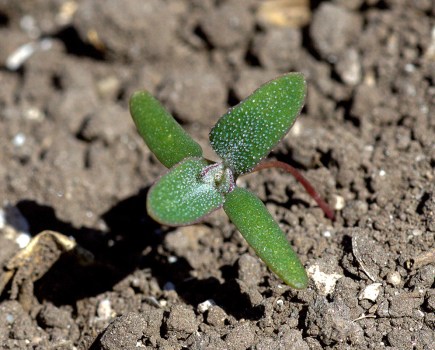Hutchinsons has made a substantial investment in its digital offering to provide an all-in-one farm management system which promises to deliver the goods for UK agriculture. CPM headed to London to hear more about the Omnia EasyPlan upgrade.
“Omnia gives the opportunity to unlock the power of data for the UK to proactively contribute to global food production issues.”
By Janine Adamson
Hutchinsons has been teasing that something big is coming and all was finally unveiled to the farming media in London at immersive art experience, Frameless. Afterall, the future is digital, well, almost.
And the reason behind the interactive, multi-sensory Van Gogh? Omnia is making a splash on the canvas in the form of the EasyPlan ugrade – promising to change the face of farm management software.
So where could be better to display the capabilities of this revamped digital farming tool than in a gallery which celebrates what’s possible in the technological landscape? That was the message from head of marketing, Nick Rainsley, as he welcomed the press to the experience which is located in Marble Arch.
The host room, which is conventionally used as one of the smaller galleries at Frameless, featured a full floor-to-ceiling presentation across three walls – echoing the immersive ethos of the venue.
So to set the scene, Hutchinsons managing director, Gordon McKechnie, explained that without the possibility of finding more land to farm, new ways to increase production while addressing environmental concerns had to be sought. “However, data gives the opportunity to meet this challenge of producing more from less,” he said.
“We’ve intentionally broadened Hutchinsons to support full UK farm-focused problem solving – this includes what we’ve done with data and the Omnia platform. Precision agriculture is the cornerstone of UK farming and enables tailoring down to a field and even sub-field level to minimise environmental impacts while maximising yields. Digital tools are a key part of this.”
Furthermore, Gordon highlighted that data is driving tangible improvements to environmental management – providing benefits which can help to mitigate climate change and aid biodiversity. “And it’s clear that as agriculture adopts the optimisation of data, the potential for improvements in food production are vast,” he stressed.
However historically speaking, there have been two key hurdles to overcome – using data responsibly and instilling trust, and, connectivity. Gordon said it was imperative that farmer concerns were addressed. “Farmers fear sharing data will make them vulnerable and divulge their competitive advantage so require assurance of responsible use; Hutchinsons takes this very seriously.
“There have also been issues related to the ability to transfer and share data. We’ve been working to overcome both of these hurdles through the Omnia upgrade,” he explained.
According to Gordon, the upgrade is game-changing and importantly, a British solution for British farming. He said the aim has been to produce a new style of farm management software which provides a suite of services. “It’s more than a technology tool – this is a fundamental shift in agricultural practice to ensure productivity and sustainability gains,” he added.
“Omnia with the EasyPlan upgrade gives the opportunity to unlock the power of data for the UK to proactively contribute to global food production issues.”
To explain what’s driven the upgrade, precision technology manager Oliver Wood took to the stage. He shared the story of Omnia so far from its launch in 2016 through to current day – now with 4000 users and 1.5M hectares managed.
As it stands, Omnia is available at three service levels – Omnia Access (£0), Omnia Field Manager (£3.15/ha) and Omnia Business Manager (£6/ha). These range from a free service for basic farm mapping (Omnia Access), through to full analysis of information for a range of variable input applications (Omnia Business Manager).
Oliver said Hutchinsons has this structure in place to accommodate for the size of each specific business and it allows for the scale of larger farms. “This is discussed individually with each farmer because grower requirements from Omnia can vary. But the platform is always under development – a process which we’ve undertaken from day one and will continue to do so. Listening to user feedback is an important factor for this,” he said.
To illustrate this openness, videos from three farmer users were shared – Andrew Booth, Harry Horrell and David Hoyles. Although having individual thoughts on Omnia, all explained they wanted a one-stop shop for data which was easy to use.
Having reviewed this initial feedback, Oliver commented it was clear there was a gap in the market which Omnia has the function to address. “So we decided to do something about it,” he said.
To glean further insight, Hutchinsons conducted both farmer and agronomist focus groups, as well as undertook a sprayer operator survey. The results indicated the potential to move Omnia into the farm management system space specifically for the UK.
But the true goal was to combine all four aspects of the current agricultural software market – telemetry, precision agriculture, decision support and farm management systems, said Oliver.
“Eight years of building up has come to this point – Omnia with the EasyPlan upgrade. It’s a combination of new or heavily upgraded modules which allow users to easily create plans and records, manage stocks and choose who to share their data with; we want to solve the problems that our clients have,” he continued.
“We want to reduce the paperwork burden, support completing records on the move, have up-to-date records throughout the season, provide user-driven smart features, offer an easy-to-use digital solution, and ultimately, support the digitisation of UK agriculture,” listed Oliver.
To follow, head of field-based IT, Lewis McKerrow, ran through the broad farm tasks which the upgrade aims to address and how Omnia has been revamped accordingly.
He said at the core is complete digital traceability. “But, we can still cater for those who prefer a physical PDF report – Omnia isn’t exclusively digital. It can perform as a hybrid model if that’s required by certain clients,” he pointed out.
The first aspect which Lewis says the upgrade improves is crop inspections which is addressed through an extension of the current Omnia Scout iOS/android app. “It’s common to have to conduct crop inspections in some areas of agriculture. We expect this is likely to become more frequent in order to justify on-farm decision making for end-to-end traceability,” continued Lewis.
“Before, such inspections could be held in the Omnia field diary, but it wasn’t possible to record live operations or manage work orders as they happened. The new upgrade enables users to take photographs of the crop or problem on the fly, draw points on the site map, log issues and add comprehensive notes. All can see the details of these inspections to provide a full history for that crop,” he explained.
Next, a considerable part of Omnia’s development has been the spray module – a new feature within the platform which streamlines the creation of crop protection plans. Lewis said this was undoubtedly the most requested function from agronomists and wider clients.
“Admittedly, pesticide legislation makes this difficult and there’s a lack of innovation within this area. So key to addressing this gap has been the development of Omnia Halo – a back-end pesticide database which operates behind the scenes.
“This takes core data from Fera which is then plugged into Halo. The system is automatically updated on a daily basis, but, is managed by human specialists for added governance and to enhance the provided data. This is what allows Omnia to successfully ‘audit’ crop protection plans,” he added.
According to Lewis, because the data from Fera is both structured and unstructured, this makes it harder for a computer to interpret hence the specialist trained staff operating solely on Halo.
“The Halo team translates the unstructured data to ensure accuracy. All-in-all, there are 15 key compliance checks to ensure the legislation is correct and adhered to. Unlike other solutions currently available, this includes checking recommendations against previous plans and applications, and multi-year active loadings for chemistry such as metazachlor.”
The spray module also has a tank mix sequence tool which can automatically sort and re-order products irrespective of how they were added to a recommendation. Finally, a tank mix calculator helps to identify exactly how much product is required based on the specific area being worked.
The next improvement is to on-farm tasks and record keeping, which Lewis says has been resolved through the new field diary module. “This was devised as a means of reducing the paperwork burden and to alleviate the disconnect between field and the farm.
“Omnia now offers three levels of flexible record management (task manager, task and record) which can be used depending on the person involved and their level within the business. For example, a larger farming enterprise may employ a farm manager who oversees the delegation of tasks. In this instance, they would access full detail through the task manager tab,” he explained.
Another significant addition is the stock module for improved stock control. Lewis stressed this is a common problem for many due to it being time consuming and inflexible. However with the upgrade, users can now create and manage orders, manage suppliers as required and track orders with automatic status updates.
“In terms of inventory updates, users can generate dedicated stores within the platform depending on product type (seed, chemical, fertiliser etc), and there’s the facility to have multiple location options across a site. This is all automatically updated, there’s a stock taking mode for auditing purposes, and it includes pricing with subsequent confidentiality controls,” he said.
An added benefit for in-house customers is that the stock control module can be connected to Hutchinsons’ ERP (enterprise resource planning) system for enhanced tracking, added Lewis.
The final farm task which the upgrade strives to streamline is crop performance, addressed through development of the existing Omnia business module. Lewis explained that farmer feedback had suggested crop performance was the most critical part of overall business management.
“This is available at both a whole and sub-field resolution including the generation of automatic CO2e calculations. Per field map, users can see the net margin variance across the area for more precise decision making.
“They can also compare variable and fixed costs at a sub-field granular level with traffic light labelling from red to green. Of course these variable costs are updated as crop protection plans are inputted and completed,” he said.
Omnia with the EasyPlan upgrade has been trialled by around 50 test users so far with Hutchinsons agronomists having access since this January, including the Halo pesticide database.
But aside from the shiny new practical features, what about initial concerns regarding the control, security and ownership of data? According to Lewis, this is all down to permissions, with a new function which allows farmers to manage visibility of the platform at an individual per-user basis.
Furthermore, Omnia is now independently governed through an ISO 27001 certification which demonstrates a business follows international best practice for information security management.
And, Hutchinsons is a founding member of the new not-for-profit ‘Farm Data Principles’ organisation which is chaired by Professor Tina Barsby. “Omnia is the first platform in the world that holds both of these accreditations,” continued Lewis, “it’s all part of building trust.”
To conclude the event, the team openly discussed the price of the new offering which to many, might come as a surprise – the EasyPlan upgrade will be included within the existing Omnia service levels at no additional cost.
“The new functionality has been added to the existing packages accordingly; the structure of the business model won’t change and there’s no extra charge,” said Lewis. “We’re going live from 7 June with the first public demonstration taking place at Cereals Event on 11-12 June,” he concluded.
This article was taken from the latest issue of CPM. Read the article in full here.
For more articles like this, subscribe here.
Sign up for Crop Production Magazine’s FREE e-newsletter here.




